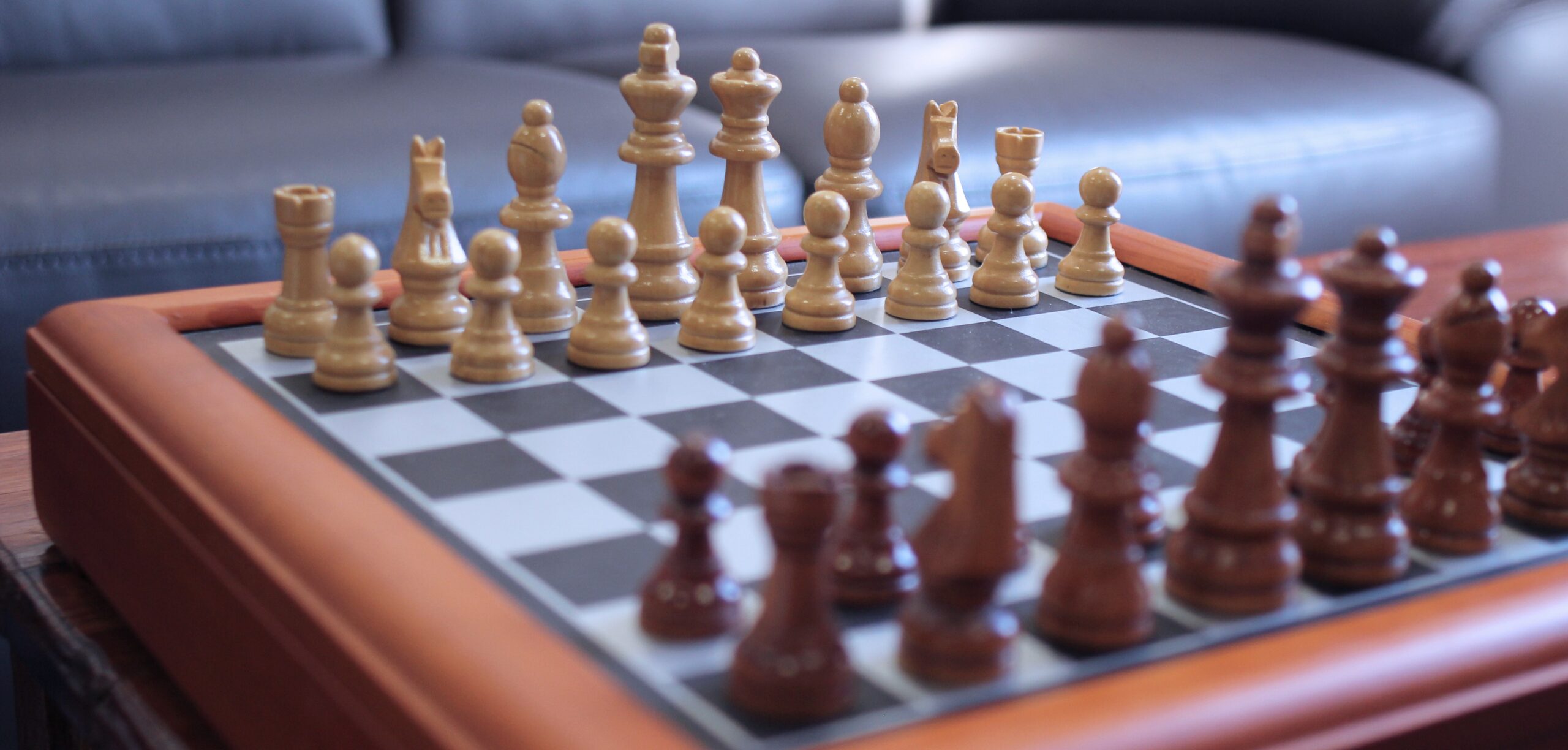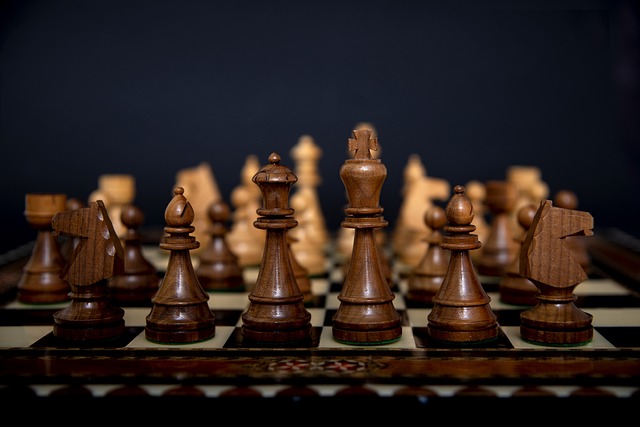Welcome to the world of chess, where strategy, tactics, and careful maneuvering reign supreme. If you’ve ever wondered how to make the most of your queen’s potential on the chessboard, then you’ve come to the right place.
“How do I use my queen effectively in chess?” is a question that many chess enthusiasts ponder. The queen, often regarded as the most powerful piece, possesses a wide range of movements and can shape the course of the game. Understanding how to harness its strength while avoiding pitfalls is crucial for achieving victory.
In this guide, we will explore various strategies, tips, and techniques that will help you utilize your queen to its fullest potential. From dominating the center of the board to launching decisive attacks, we will delve into the art of effective queen usage, providing you with the knowledge and skills necessary to outmaneuver your opponents.
Whether you’re a beginner seeking to grasp the basics or an intermediate player looking to refine your queen-centric tactics, this guide will equip you with the tools to navigate the chessboard with confidence and precision. Get ready to unlock the secrets of the queen’s potential, and elevate your chess game to new heights.
So, let’s embark on this exciting journey and discover how to wield your queen effectively, making every move count in the captivating world of chess.
How can I maximize the power and influence of my queen on the chessboard?
To maximize the power and influence of your queen on the chessboard, it is crucial to prioritize its mobility and activity. Avoid placing your queen on the sidelines or in positions where it is easily blocked or restricted by your own pawns or pieces. Instead, aim to position your queen in open lines and diagonals where it can freely maneuver and exert control over the board.
In addition to mobility, strategic coordination with your other pieces is key. Seek opportunities to create powerful combinations and tactical threats by aligning your queen with your rooks, bishops, or knights. This coordination can amplify the impact of your queen’s moves and allow for devastating attacks on your opponent’s position.
What are the key movement capabilities of the queen and how can I utilize them strategically?
The queen, being the most powerful piece on the chessboard, possesses versatile movement capabilities that can greatly influence the game’s outcome. It can move horizontally, vertically, and diagonally across any number of squares. This freedom of movement grants the queen an expansive reach, allowing it to swiftly navigate the board and engage in both offensive and defensive maneuvers.
To utilize the queen strategically, it’s essential to consider its ability to control critical squares, launch attacks, defend valuable pieces, and exploit weaknesses in the opponent’s position.

How does the queen’s role in controlling the center of the chessboard contribute to my overall gameplay?
The queen’s role in controlling the center of the chessboard is paramount to achieving strong gameplay. By positioning the queen strategically in the center, it exerts influence over a larger portion of the board and can effectively dictate the flow of the game.
The queen’s commanding presence in the center restricts the opponent’s freedom, limiting their options and forcing them to react to your moves. This control over the center allows you to establish a solid foundation for your other pieces, enabling coordinated attacks and efficient defense, ultimately enhancing your overall gameplay.
What are some effective opening strategies that allow me to leverage the potential of my queen?
When it comes to opening strategies, leveraging the potential of the queen can set the tone for the rest of the game. One effective opening strategy is the Queen’s Gambit, where you offer your opponent a pawn in exchange for quick development and a central queen presence.
Another approach is the King’s Indian Defense, where you position your queen to support a strong pawn structure and prepare for a counterattack. By initiating these opening strategies, you can capitalize on your queen’s mobility, assert control over the board, and create opportunities for further tactical advancements.
How can I launch decisive attacks using the offensive capabilities of my queen?
The offensive capabilities of the queen make it a formidable tool for launching decisive attacks. With its ability to traverse vast distances and attack in multiple directions, the queen can exploit weak points in the opponent’s position.
By coordinating the queen with other pieces, such as knights and bishops, you can create powerful combinations and threats that can lead to capturing valuable pieces or delivering checkmate. Utilizing the queen’s offensive prowess requires careful planning, calculation, and a deep understanding of the game’s tactical intricacies.
What defensive maneuvers should I employ to protect my queen and strengthen my position?
Protecting the queen and strengthening your position necessitate employing various defensive maneuvers. As the queen is a prime target for the opponent, safeguarding it is crucial. One defensive tactic is to position your other pieces strategically around the queen, creating a protective shield.
Additionally, avoiding unnecessary risks and maintaining a solid pawn structure can help fortify your position and prevent the opponent from launching successful attacks on your queen. Regularly reassessing the safety of the queen and adapting defensive measures accordingly ensures its longevity and contributes to a more robust overall position on the chessboard.
How can I coordinate my queen with other pieces to gain a tactical advantage?
Coordinating the queen with other pieces is a key aspect of gaining a tactical advantage in chess. The queen’s versatility allows it to combine forces with other pieces to create powerful threats and tactical opportunities.
By strategically aligning the queen with knights, bishops, or rooks, you can launch devastating attacks on the opponent’s position. Coordinated piece play can involve tactics such as pinning, skewering, or creating discovered attacks, amplifying the impact of your moves, and forcing your opponent into difficult defensive positions.
Mastering the art of piece coordination with the queen can lead to significant tactical advantages on the chessboard.
What are the common mistakes to avoid when using the queen in chess?

When using the queen, it’s crucial to be aware of common mistakes to avoid. One frequent error is overexposing the queen, leaving it vulnerable to attacks or traps. Placing the queen too early in the game without proper support can result in it becoming a target for the opponent’s pieces.
Another mistake is neglecting the development of other pieces while focusing solely on the queen’s activities. This can lead to an imbalanced position and a lack of coordination among your own forces.
Additionally, care should be taken to avoid unnecessary queen moves that do not contribute to the overall strategic plan. Being mindful of these common mistakes can help you make better decisions and utilize the queen more effectively in your gameplay.
How can I effectively utilize my queen in the endgame to secure victory?
The endgame is a critical phase where utilizing the queen effectively can secure victory. In the endgame, the queen’s mobility becomes even more valuable as the board opens up and the number of pieces dwindles.
Using the queen to target weak pawns or isolated enemy pieces can create opportunities for material gain. The queen’s ability to control multiple areas of the board allows it to support the advancement of pawns, create passed pawns, or participate in mating attacks.
Utilizing the queen’s maneuverability and tactical awareness in the endgame can often be the key to achieving a favorable outcome and securing victory.
| Topic | Key Points | Example |
|---|---|---|
| Controlling the Center | Advantages of Queen’s presence in the center of the board | Illustration of a game with a dominant central queen |
| Launch Powerful Attacks | Utilizing the queen’s range and mobility for devastating attacks | Annotated game demonstrating a queen-led attack |
| Defensive Strategies | How to protect the queen and use it for defensive purposes | A positional example showcasing the queen’s defensive maneuvers |
| Coordinate with Other Pieces | Enhancing Queen’s effectiveness through piece coordination | Game analysis highlighting the queen’s synergy with other pieces |
| Endgame Tactics | Queen-specific strategies in the endgame phase | Endgame position with queen-related winning or drawing ideas |
What advanced strategies involve sacrifices, forks, and checkmate threats with the queen?
Advanced strategies involving sacrifices, forks, and checkmate threats with the queen can be game-changing. Sacrifices with the queen, such as sacrificing it for a devastating attack or a strong positional advantage, can catch opponents off guard and create unbalanced positions in your favor.
Utilizing forks, where the queen attacks two or more pieces simultaneously, can lead to material gain or create tactical opportunities. Additionally, the queen’s ability to deliver checkmate threats, either by teaming up with other pieces or launching a solo attack, can force the opponent into difficult positions.
Mastering these advanced strategies involving sacrifices, forks, and checkmate threats with the queen requires precise calculation, creativity, and a deep understanding of the game’s dynamics.
How do I navigate queen-dominated positions and make the most of my queen’s presence?
Navigating queen-dominated positions requires a careful balance of aggression and restraint to make the most of the queen’s presence. In such positions, the queen’s power and influence can be overwhelming, but it’s important to avoid overextending and exposing vulnerabilities.
Maintaining piece coordination and strategic control is crucial. Utilize the queen to control critical squares, restrict the opponent’s king’s movement, and support your other pieces. However, be mindful of potential counterattacks or sacrifices from the opponent.
Maintaining a dynamic equilibrium in queen-dominated positions allows you to exploit tactical opportunities, launch decisive attacks, and outmaneuver your opponent, leading to victory on the chessboard.
When should I consider exchanging my queen, and when is it advantageous to keep it on the board?
The decision of whether to exchange the queen or keep it on the board depends on the specific circumstances of the game. Exchanging the queen can be advantageous in certain situations, such as simplifying the position when ahead in material or transitioning into an endgame where the queen’s mobility may be less impactful.
Exchanging the queen can also help alleviate the pressure if your opponent’s queen is dominating the board. On the other hand, keeping the queen on the board can be beneficial when it contributes to an attack, creates threats, or maintains a strong presence that your opponent must constantly defend against.
Evaluating the position, considering the balance of material, piece activity, and strategic plans is crucial when deciding whether to exchange the queen or retain its power.

How does the queen contribute to positional play and create long-term advantages?
The queen plays a pivotal role in positional play, contributing to the creation of long-term advantages. With its extensive mobility, the queen can control key squares, influence the central area of the board, and exert pressure on the opponent’s position.
By placing the queen in strategic positions, you can hinder your opponent’s plans, restrict their piece activity, and gain control over crucial lines and diagonals. The queen’s ability to coordinate with other pieces amplifies its positional impact, allowing for coordinated attacks and defense.
In addition, the queen’s versatility enables it to transition between different phases of the game, adapting to changing positional requirements. Understanding the queen’s contribution to positional play can help you formulate long-term strategies and exploit positional weaknesses for lasting advantages.
The Bottom Line
In conclusion, the effective utilization of the queen in chess can significantly impact the outcome of a game. Understanding the queen’s movement capabilities, its role in controlling the center of the board, and its offensive and defensive potential is essential for strategic decision-making.
By coordinating the queen with other pieces, avoiding common mistakes, and employing advanced tactics, you can gain a tactical advantage and navigate various positions with confidence. Additionally, analyzing famous games showcasing effective queen usage provides valuable insights and inspiration.
The queen’s role in positional play contributes to long-term advantages while balancing offense and defense is crucial for a successful game strategy. By mastering the art of using the queen effectively, you can enhance your chess skills and increase your chances of victory on the chessboard.




